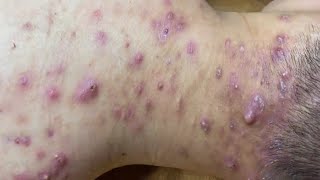Creating an effective daily routine for acne-prone skin involves a balance of cleansing, treatment, and hydration — all while avoiding irritation. Here’s a practical, dermatologist-informed routine you can follow:
🌞 Morning Routine
- Cleanser
- Use a gentle, non-comedogenic cleanser (e.g., CeraVe Foaming Cleanser or La Roche-Posay Effaclar).
- If you have oily skin, a salicylic acid cleanser (e.g., Neutrogena Oil-Free Acne Wash) can help unclog pores.
- Toner (Optional)
- Alcohol-free toners with witch hazel or niacinamide help reduce inflammation.
- Treatment
- Apply a topical treatment like:
- Benzoyl peroxide (2.5%-5%) – kills acne-causing bacteria.
- Niacinamide serum – reduces redness and sebum.
- Azelaic acid – helps with acne and pigmentation.
- Apply a topical treatment like:
- Moisturizer
- Choose a lightweight, oil-free moisturizer (e.g., Neutrogena Hydro Boost or Cetaphil Oil-Free).
- Sunscreen
- Use a broad-spectrum SPF 30+ (e.g., EltaMD UV Clear or La Roche-Posay Anthelios). Sunscreen helps prevent post-acne dark spots.
🌙 Night Routine
- Cleanser
- Same as morning; double cleanse if you wear sunscreen/makeup.
- Treatment (Stronger Actives)
- Use a retinoid (e.g., adapalene 0.1% – Differin) 3–4 times a week.
- Start slowly (2–3x/week), then increase to nightly if tolerated.
- Spot Treatment (If Needed)
- Apply a sulfur or salicylic acid spot treatment to active pimples.
- Moisturizer
- Use a non-comedogenic moisturizer to prevent irritation from treatments.
✅ Weekly Extras (1–2x/week)
- Clay mask or exfoliating mask (with BHA or AHA) for deep pore cleaning.
- Avoid physical scrubs — they can irritate acne-prone skin.
⚠️ Tips to Keep in Mind
- Avoid over-washing or using too many actives at once.
- Change pillowcases regularly.
- Don’t pick or pop pimples — it worsens inflammation and causes scars.
- If acne persists beyond 8–12 weeks, see a dermatologist for prescription options.
Would you like product recommendations tailored to your skin type (dry, oily, combination)?

